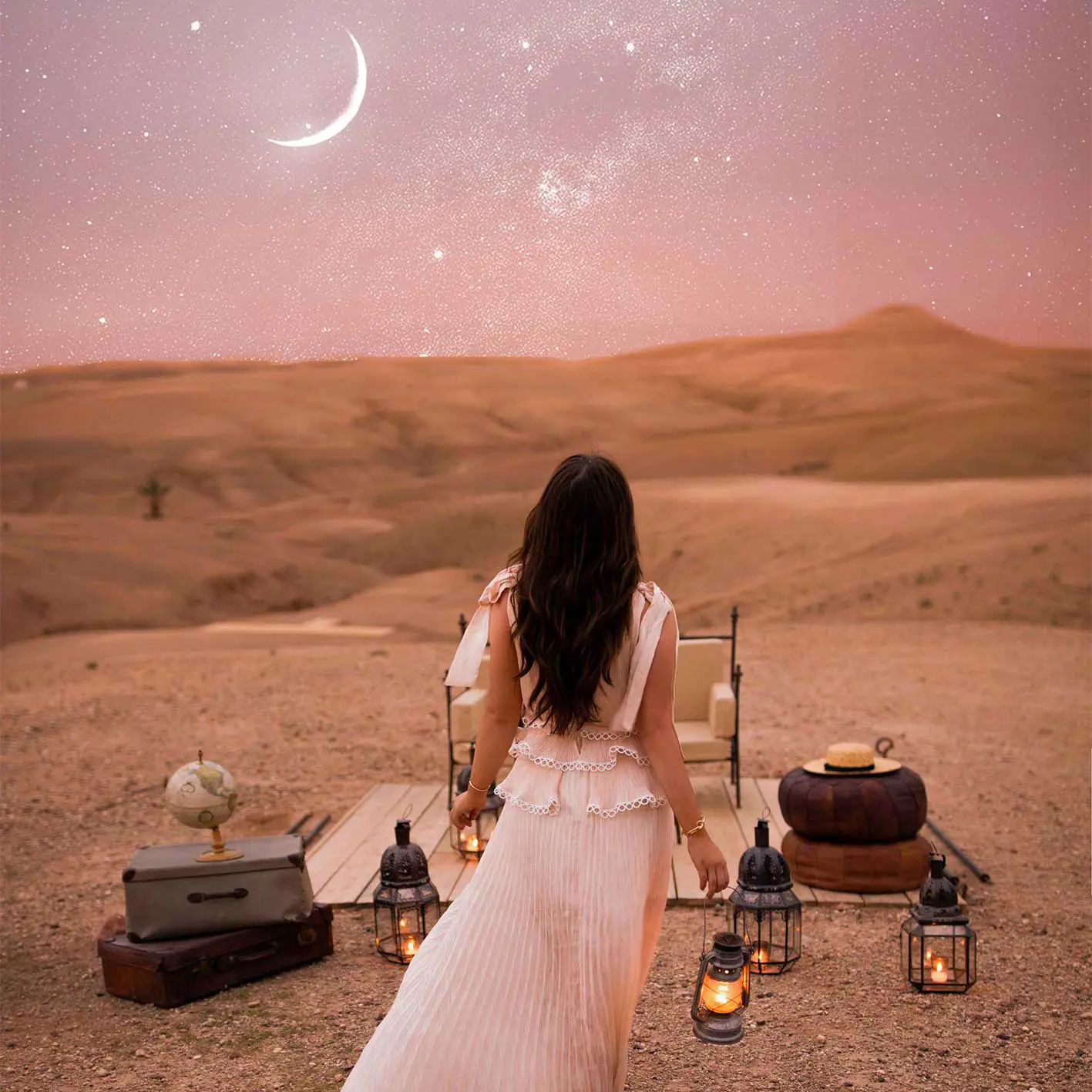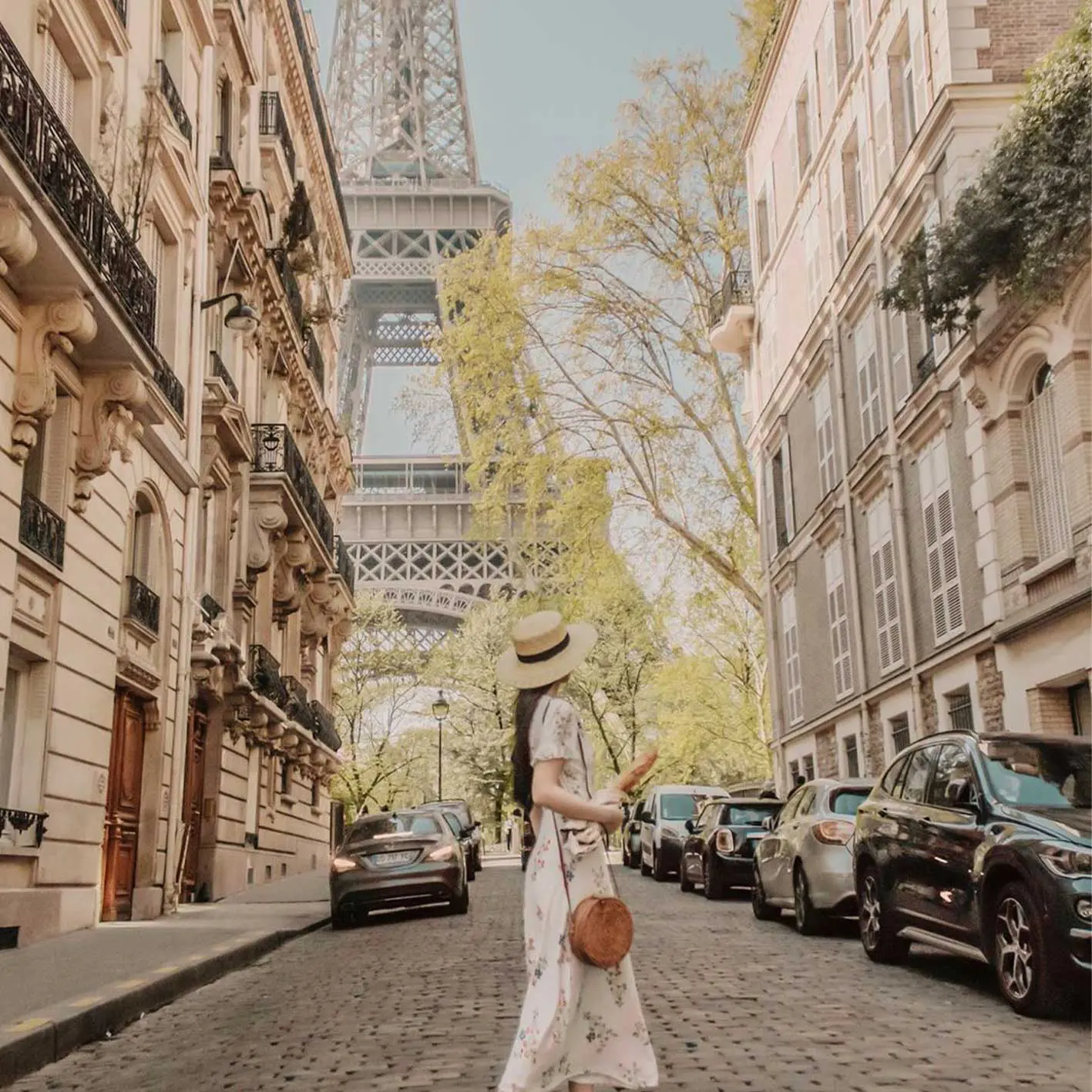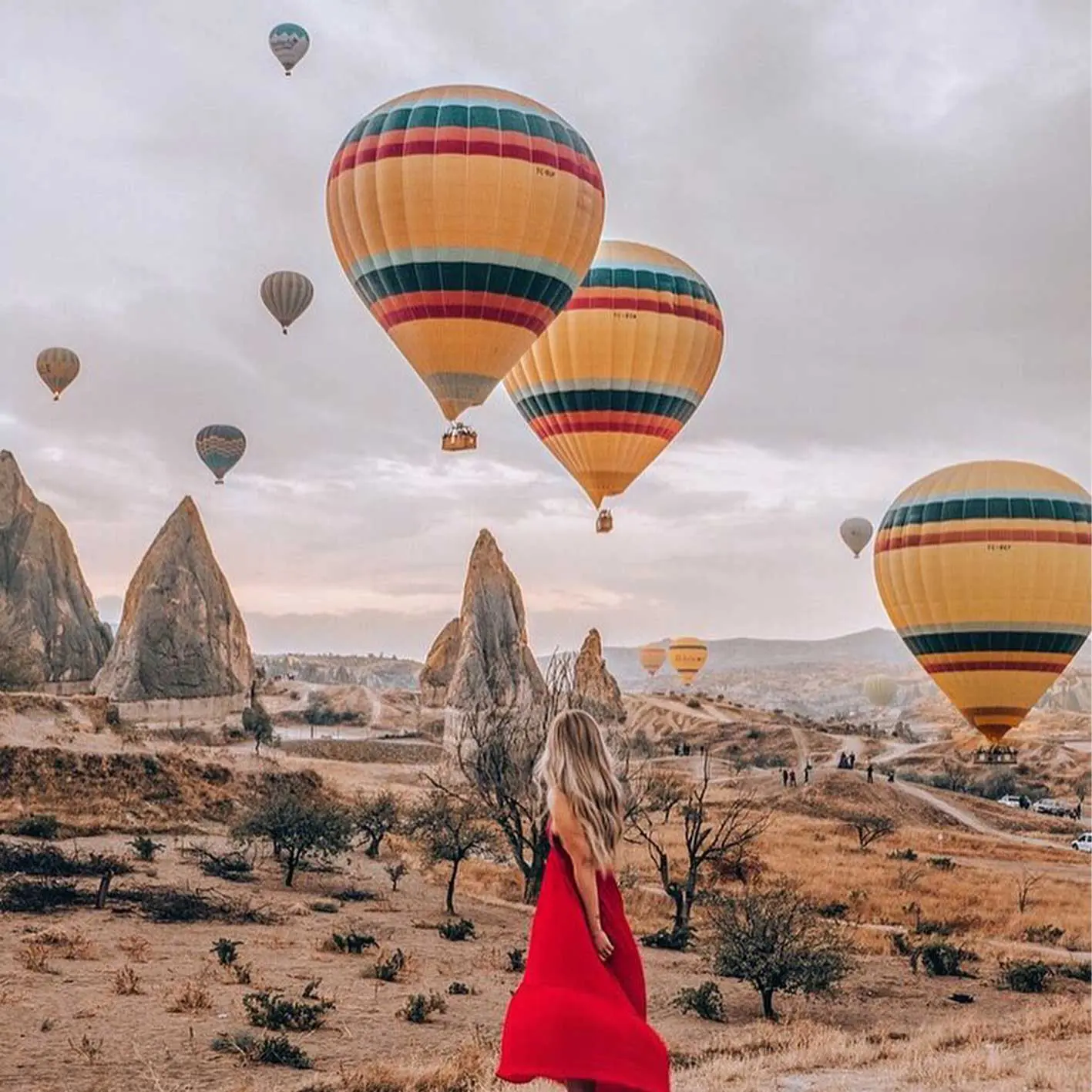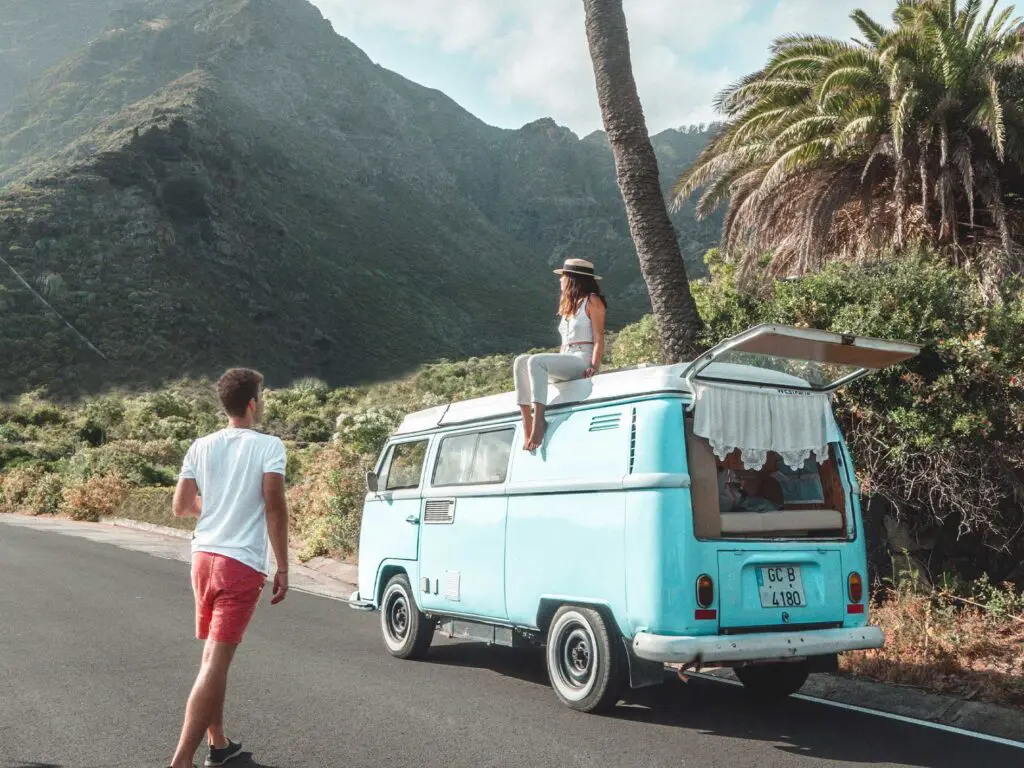It’s no secret that the travel and tourism industries were hit hard by the pandemic.
In 2019, international tourist arrivals reached 1.5 billion globally. But by the first half of 2020, international tourism was down by 65%. A travel ban meant that international – and domestic – borders were shut. Airplanes were grounded with almost all passenger flights cancelled, hotels were forced to close and usually bustling tourist hubs were cricket-silent.
The events industry was impacted too. Major festivals, such as Coachella and Lollapalooza, were cancelled, along with sporting events like the Tokyo Olympics and Wimbledon. Tourist attractions that usually draw in millions of dollars, brought in zero.
But as vaccines are starting to be rolled out, things are looking up for global travel and tourism.
Travellers have been cooped up in their homes, with nothing but time to plan their next luxury escape. 93% of Gen Zers are planning future trips and far-flung destinations are at the top of their lists. A destination far from home came top of the wish list for 32%, while 29% said they want to tick off ‘bucket-list’ destinations.
Trend forecasters at Wunderman Thompson say, “In a post-COVID world, we can expect a heightened passion for indulgence, with more decadent purchases rising to prominence – think luxury experiences and holidays.” Music to the ears of those working in the travel and tourism industries.

Slow steps to recovery
As many consumers are seeing their next trip as their ‘trip of a lifetime’, we can expect to see people spend more and want to throw themselves into their next holiday experience. In fact, popular travel destinations are already seeing promising steps to recovery.
United Arab Emirates
Hotels in the UAE reported the second highest occupancy rate after China in 2020, despite the pandemic. Plus, hotel capacity allowances increased from 70% to 80% in April. “This year we are expecting a summer boom that is unlike previous years.” Says Thomas Grundner, head of commercial at JA Resorts & Hotels.
Australia
As Australians are encouraged to ‘Holiday here this year’, three of the top 10 most tagged and talked about brands on Instagram in Q1 2021 included ‘sydney’, ‘visitnsw’ and ‘tasmania’ official accounts, according to this report. 55% of Aussie travellers also intend to take an interstate road trip in the next 12 months, according to Tourism Australia.
Asia
China recorded hotel occupancy levels of 62% during April 2021, with wider Asia on 34%. The region has also seen an increase in online travel agency bookings, according to Amadeus’ data. In September 2020, Vietnam Airlines reported that it was already flying more passengers domestically than it was a year before, prior to the start of the pandemic.
UK and Europe
In the UK, Tripadvisor reports that between May 2020-2021 hotel searches were up more than any other major market. Similarly in Spain, Italy, Germany and France, who have all seen significant growth in hotel search traffic via Tripadvisor.

How brands can tap into wanderlust
According to a TripAdvisor survey, about a third of us have already booked at least one vacation this year and half are planning to do so. Engaging these planners will be essential for helping travel brands recover in 2021. So how can you reach them and drive consideration?
Well 86% of people (specifically 92% of Gen Z) said they’ve become interested in a specific location after seeing UGC. After a grim year for the industry, collaborating with content creators can boost your brand awareness and get in front of these holiday planners on social media. Here are four ways to work with creators and tap into our collective wanderlust.
Prioritise covid-safe travel
With restrictions and safety protocols still in place around the globe, it’s vital you prioritise and encourage covid-safe travel. Customers may also have some anxiety before travelling again, so this can help put their minds at ease. And who better to help spread your messaging than responsible and compliant influencers.
One influencer doing it right is Vamp creator, Kelsey Heinrichs “I am travelling again, both for fun and for work, but I’m avoiding promoting travel to red list and amber list countries. I think it’s really important that creators take responsibility for promoting safe travel — and remain relatable.”
We suggest partnering with influencers you know you can trust, either from previous collaborations or from within a vetted community, like Vamp. Then be clear and upfront with any safety information you want to be included in posts or captions. You could even encourage ‘behind the scenes’ style footage of their safety precautions. While this might be a slight departure from the polished content you are used to, it taps into a natural curiosity.
Target digital nomads
As our working-from-home situations become more permanent, the dream of working-away-from-home is becoming a reality. The UAE, Barbados and Mauritius have all unveiled remote working visa programs to attract a growing global pool of digital nomads. While Hawaii’s “Movers & Shakas” program attracts people to come to the island and set up remote offices.
If your brand can offer something similar, then aligning yourself with this popular theme can earn you some attention on social. And content creators, the epitome of digital nomads, are the perfect partners. Landing, an apartment-subscription brand, collaborates with influencers like @titatots to showcase their low commitment living options.
@titatots Reply to @dcllie #apartmenttour #digitalnomad #greatuntold #remotework
Or stay local
With border closures keeping us on home soil, government bodies are encouraging us to ‘holiday at home’ with half-price flights and travel vouchers. With consumers also wanting to support local businesses now more than ever, we’re seeing a huge spike in domestic travel. According to booking.com, 47% of people plan to travel within their own country and 43% plan to explore a new destination within their home country. So is it time to start looking closer to home and target stay-cationists?
It’s a travel creator’s job to find the hidden gems, picture-perfect locations and once-in-a-lifetime experiences in their hometown. They can be your customers’ local travel guides and promote your products as their ‘must haves’ when travelling domestically.
TomTom recently turned to Vamp to help them drive downloads of their Go Nav app. Talent all across Europe created aspirational travel content that showed how easy it is to explore your home with the brand’s app. Creators encouraged their audience to download the app through organic Instagram posts. Vamp then boosted this content to reach a wider audience, which achieved over 32.9k link clicks and an impressive CPC 2.7x cheaper than the platform benchmark.
Promote out-of-the-ordinary experiences
If the past 12+ months has taught us anything, it’s that life is short and can change in the blink of an eye. Little wonder then that travellers are now seeking new, once-in-a-lifetime adventures and travel experiences that physically challenge them.
Much Better Adventures saw a surge in dare devils booking trips like trekking to Mount Everest’s base camp and 100km expeditions in Greenland. And Intrepid Travel says their Everest expeditions have also been popular, alongside walking the Inca trail and Antarctica Expeditions.
Influencers are innovators, and can creatively promote your brand or product in innovative ways. In a bid to encourage people to seek thrilling adventures and explore the country with a different perspective, Tourism New Zealand ran a social media campaign with comedian @tomassainsbury. Their #DoSomethingNew messaging was tongue-in-cheek and aimed to influence travellers to try an experience they’ve never done before, or visit a tourist location in a different way, such as skydiving over Mt Maunganui rather than walking it and posing as the typical ‘Summit Spreadeagle’.

Encourage sustainable travel
When global travel halted, we gave popular destinations a much-needed vacation. Global air and water quality improved and wildlife enjoyed the freedom of a monetarily-quieter world. These glimpses of what our home can look like has inspired a more sustainable outlook on travelling. 53% of travellers are looking for more sustainable ways to travel, 53% are also willing to reduce their waste and recycle their plastic when travelling and 48% will opt for alternative destinations to avoid overcrowding.
A niche group of creators who are at the forefront of the sustainable travel trend are ‘van-life influencers’. Known for travelling around by van, usually with a partner or furry friend by their side, van-lifers tend to be more conscious consumers given their limited space, produce less waste because of this, have a ‘leave no trace’ mentality. Partnering with these types of creators will help your brand reach this new wave of responsible travellers and align your brand with this emerging trend.

